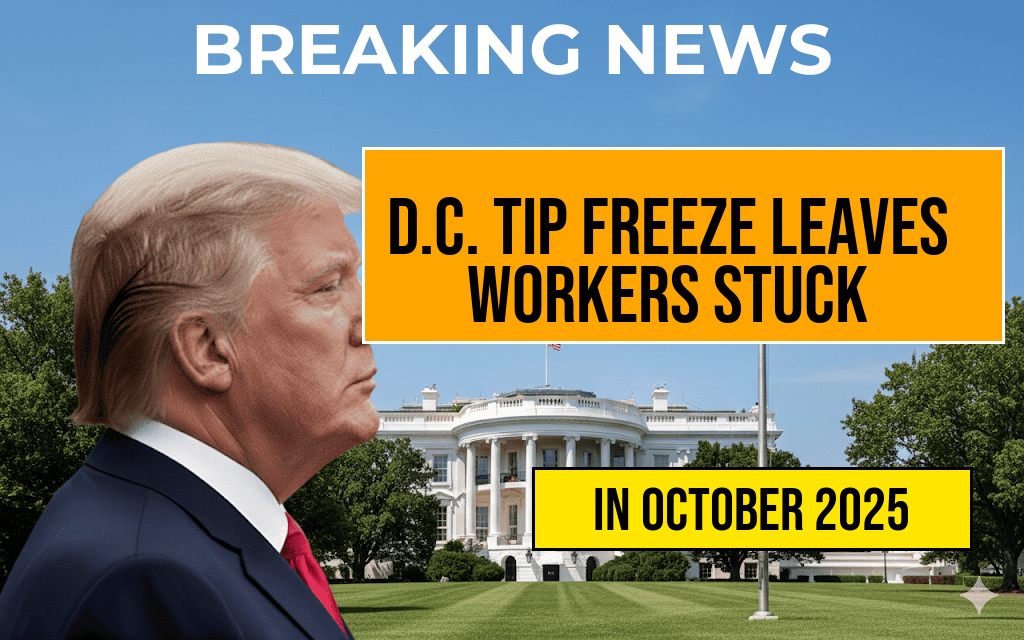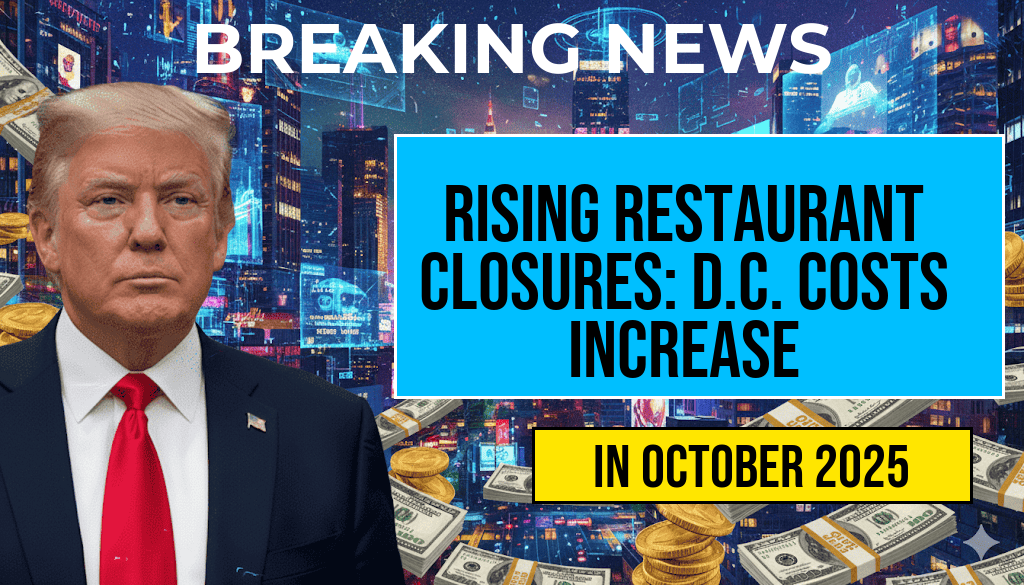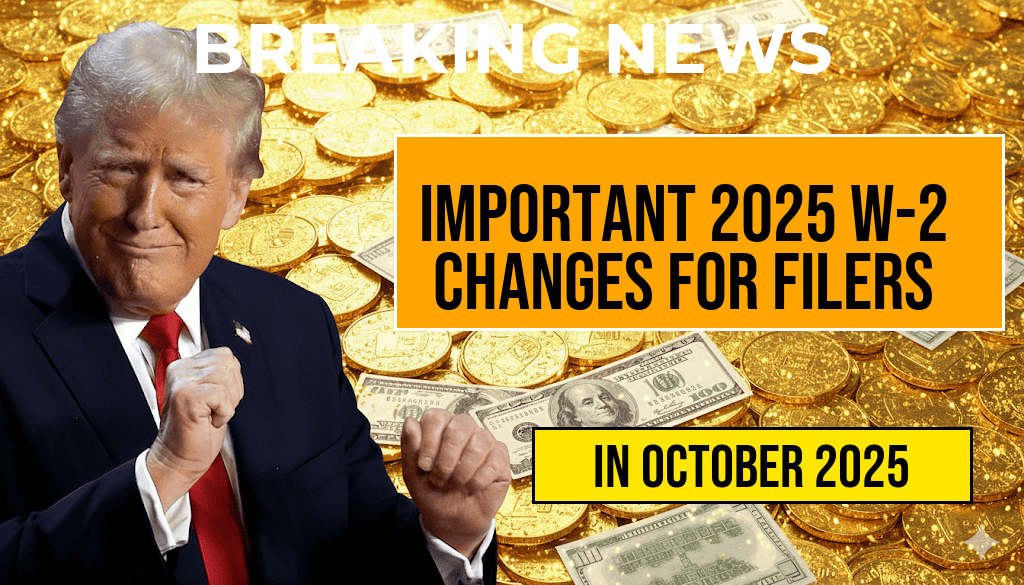The recent decision by the District of Columbia’s government to implement a tip freeze until July 2026 has left thousands of service industry workers in a precarious financial situation. These workers, many of whom rely heavily on tips to supplement their income, will remain at a base pay of $10 per hour with no additional raises expected this year. The shift comes amidst ongoing discussions about fair wages and the economic impact of the pandemic on service jobs. Advocates for workers are voicing concerns that this prolonged freeze could further exacerbate income inequality and push many employees deeper into financial hardship.
Impact on Service Industry Workers
With the cost of living continuing to rise in D.C., many service industry employees are struggling to make ends meet on a stagnant wage. The following points highlight the challenges they face:
- Living Costs: The rising cost of housing and basic necessities in Washington, D.C. has not slowed down, putting additional strain on workers earning a fixed wage.
- Reliance on Tips: Many service workers depend on tips for their livelihood, making the freeze particularly challenging during a time when they are not expected to see any improvement in their base salary.
- Economic Disparities: The situation could further widen the economic gap between service workers and other sectors that have seen wage growth.
Background on the Tip Freeze
The decision for a tip freeze is rooted in broader economic discussions. In 2020, D.C. passed legislation aimed at increasing the minimum wage for tipped workers, which has since been a point of contention among businesses and advocacy groups. The most recent announcement, which extends the freeze until July 2026, has drawn criticism from various stakeholders.
Legislative Context
According to the D.C. Department of Employment Services, the base pay for tipped employees has remained stagnant since the beginning of the pandemic. This is a significant departure from previous years when annual adjustments were made to help workers keep pace with inflation and rising living expenses.
With many businesses struggling to recover from the pandemic’s economic impact, the government has prioritized stability in the hospitality sector, leading to this controversial decision.
Community Reactions
The response from the local community has been mixed. While some business owners argue that maintaining a lower wage structure is essential for keeping restaurants and bars afloat, workers and advocacy groups are raising alarms about the long-term implications of this freeze.
- Worker Advocacy: Organizations like the Restaurant Opportunities Centers United (ROC United) have been vocal about the need for a living wage, emphasizing that service workers deserve better compensation.
- Business Concerns: Restaurant owners express fears that increasing wages could lead to higher prices for consumers, potentially reducing business as they recover from pandemic losses.
Future Prospects
Looking ahead, the situation raises several questions about the future of tipped wages in D.C. As the economic landscape continues to evolve, both businesses and workers will need to adapt to changing conditions. The possibility of a reassessment of the tipped wage policy may emerge, particularly if community advocacy efforts gain momentum.
Potential for Change
Local lawmakers may face increasing pressure to revisit the current wage structure, especially if economic indicators show that service workers are struggling disproportionately compared to other sectors. The ongoing dialogue around wage fairness, economic recovery, and worker rights will be crucial in shaping future policies.
Conclusion
The tip freeze in Washington, D.C. until July 2026 is a significant development for the service industry, leaving many workers in a challenging financial position. As the debate continues over fair wages and the future of the hospitality sector, the voices of service workers will remain critical in advocating for change. For more information on wage policies and worker rights, you can visit [Forbes](https://www.forbes.com/) and [Wikipedia](https://en.wikipedia.org/wiki/Minimum_wage).
Frequently Asked Questions
What is the current status of the tip wage in D.C.?
The tip wage in D.C. is frozen until July 2026, meaning that workers who rely on tips will remain at a minimum of $10 per hour without any base wage increase this year.
How does the tip freeze affect employees in the service industry?
The tip freeze prevents thousands of service industry employees from receiving a raise, leaving them dependent on tips while their base pay remains stagnant at $10 per hour.
When will the tip wage be reviewed again?
The tip wage in D.C. is set to be reviewed again in July 2026, after which potential adjustments may be considered based on economic conditions and other factors.
Are there any plans to change the tip wage policy in the near future?
Currently, there are no official plans to change the tip wage policy before the scheduled review in July 2026, leaving many workers in a challenging financial situation.
What can workers do to advocate for a change in the tip wage?
Workers can join advocacy groups, contact local representatives, and raise awareness about the challenges of the tip wage freeze to push for policy changes and better working conditions.






